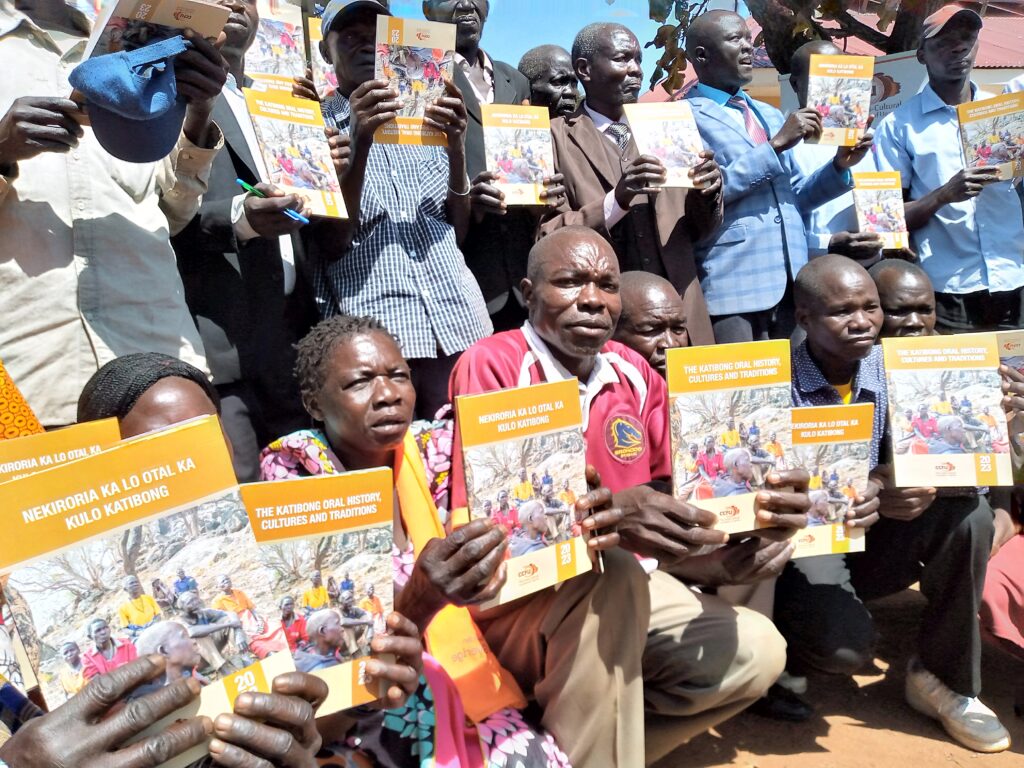The publication in which the oral history, traditions, and cultures of the Katibong community also known as Katebo in South Sudan was launched by the LCV chairperson of Karenga district at Lokori sub-county during an event attended by the District Resident Commissioner, the LCV Vice-Chairperson and representatives from other indigenous minority groups such as the Ik from Kaabong district, the Ngokutio from Kitgum district, the Nyangia and Napore from Karenga district.
The Katibong oral history publication is one of CCFU’s interventions to promote the cultural rights of indigenous minority groups in Uganda by profiling their cultural resources and reviving the use of indigenous languages. It is expected that this publication will be used to support young people to embrace their cultures through both formal and informal structures such as schools and clan shrines respectively. It is also expected that the publication will be used to strengthen the identity of the Katibong community in Uganda and restore relationships with their relatives in South Sudan.
During the launch of the publication, the LCV chairperson and the RDC mobilized the Katibong to embrace their cultures and identity and become champions of peaceful co-existence.

The Katibong in Uganda are one of the Indigenous Minority Groups (IMGs) of people who inhabit the current Lokori sub-county. However, others are scattered in various parts of Karenga district formerly the Napore sub-county. Napore currently borders the Katibong from the south, Ngokutio of Orom (Kitgum district) from the west, the Ik community of Kaabong district from the east, and the Ketebo of Ikwotos county and Didinga of Budi county, eastern equatorial state (South Sudan) from the north.
The Katibong community is said to have originated from Abyssinia, current day Ethiopia where they were neighbors to the Fungech also known as Toposa, the Napore, the Ngokutio, and the Liru, currently known as Langi of the Lango region. All these groups belong to Nilo Hamites. The Katibong/Ketebo, in particular, is said to have been closely related to Lotuko (Lotuho) and Mundari tribes living in South Sudan. They are said to have been the clans left behind by the main clans/ tribes when the rest were leaving the original settlement (Abisynia/Ethiopia).

